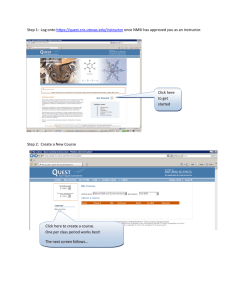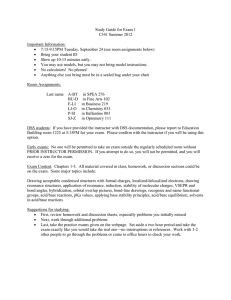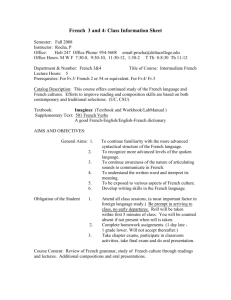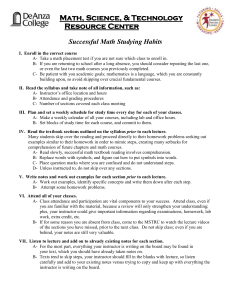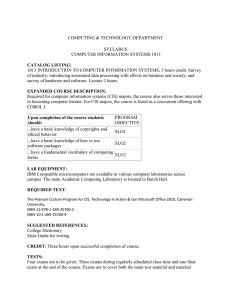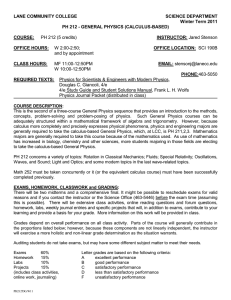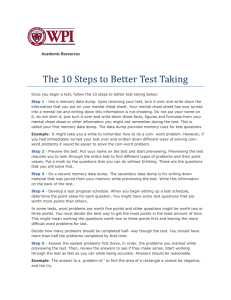Test-Taking Strategies
advertisement
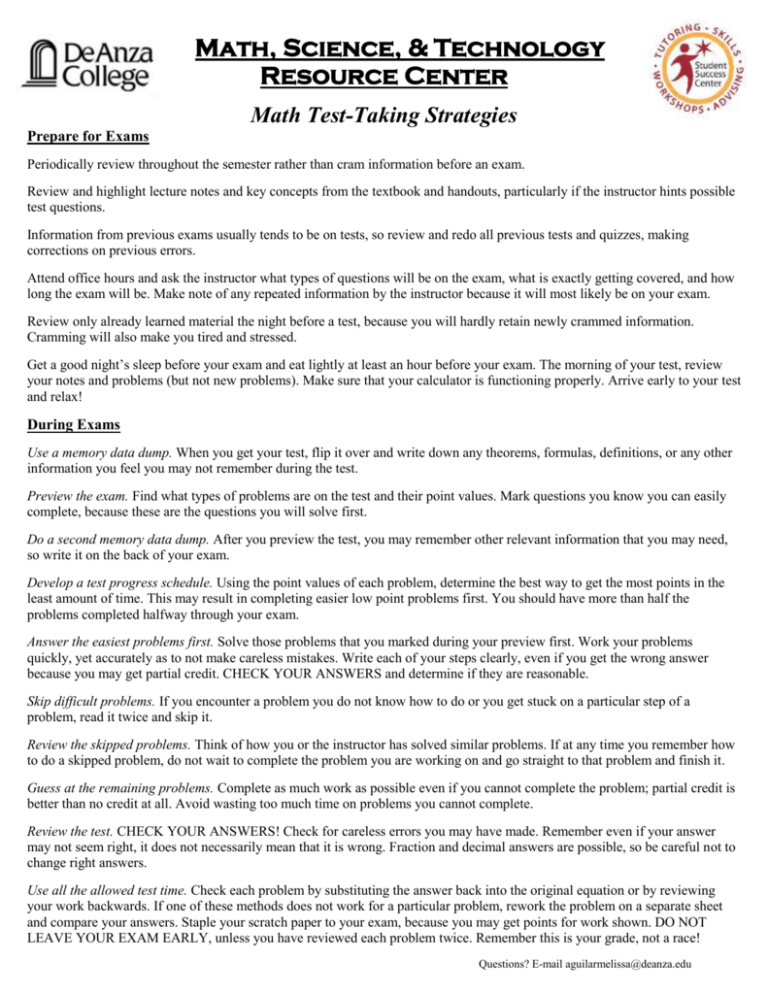
Math, Science, & Technology Resource Center Math Test-Taking Strategies Prepare for Exams Periodically review throughout the semester rather than cram information before an exam. Review and highlight lecture notes and key concepts from the textbook and handouts, particularly if the instructor hints possible test questions. Information from previous exams usually tends to be on tests, so review and redo all previous tests and quizzes, making corrections on previous errors. Attend office hours and ask the instructor what types of questions will be on the exam, what is exactly getting covered, and how long the exam will be. Make note of any repeated information by the instructor because it will most likely be on your exam. Review only already learned material the night before a test, because you will hardly retain newly crammed information. Cramming will also make you tired and stressed. Get a good night’s sleep before your exam and eat lightly at least an hour before your exam. The morning of your test, review your notes and problems (but not new problems). Make sure that your calculator is functioning properly. Arrive early to your test and relax! During Exams Use a memory data dump. When you get your test, flip it over and write down any theorems, formulas, definitions, or any other information you feel you may not remember during the test. Preview the exam. Find what types of problems are on the test and their point values. Mark questions you know you can easily complete, because these are the questions you will solve first. Do a second memory data dump. After you preview the test, you may remember other relevant information that you may need, so write it on the back of your exam. Develop a test progress schedule. Using the point values of each problem, determine the best way to get the most points in the least amount of time. This may result in completing easier low point problems first. You should have more than half the problems completed halfway through your exam. Answer the easiest problems first. Solve those problems that you marked during your preview first. Work your problems quickly, yet accurately as to not make careless mistakes. Write each of your steps clearly, even if you get the wrong answer because you may get partial credit. CHECK YOUR ANSWERS and determine if they are reasonable. Skip difficult problems. If you encounter a problem you do not know how to do or you get stuck on a particular step of a problem, read it twice and skip it. Review the skipped problems. Think of how you or the instructor has solved similar problems. If at any time you remember how to do a skipped problem, do not wait to complete the problem you are working on and go straight to that problem and finish it. Guess at the remaining problems. Complete as much work as possible even if you cannot complete the problem; partial credit is better than no credit at all. Avoid wasting too much time on problems you cannot complete. Review the test. CHECK YOUR ANSWERS! Check for careless errors you may have made. Remember even if your answer may not seem right, it does not necessarily mean that it is wrong. Fraction and decimal answers are possible, so be careful not to change right answers. Use all the allowed test time. Check each problem by substituting the answer back into the original equation or by reviewing your work backwards. If one of these methods does not work for a particular problem, rework the problem on a separate sheet and compare your answers. Staple your scratch paper to your exam, because you may get points for work shown. DO NOT LEAVE YOUR EXAM EARLY, unless you have reviewed each problem twice. Remember this is your grade, not a race! Questions? E-mail aguilarmelissa@deanza.edu

